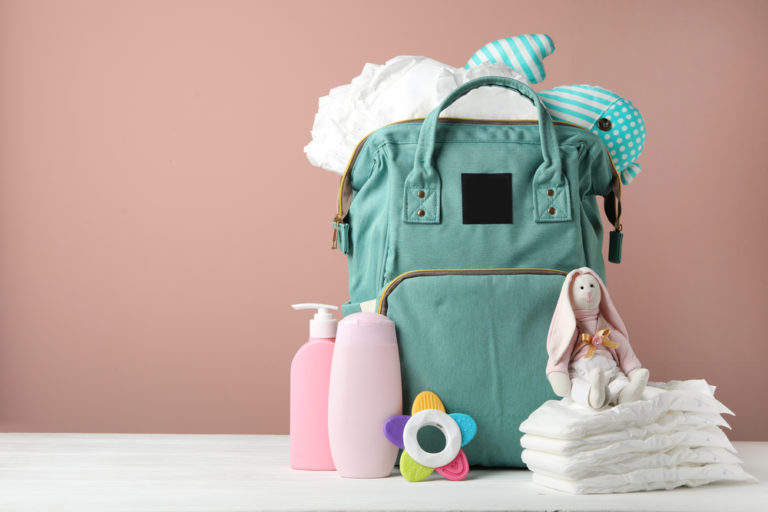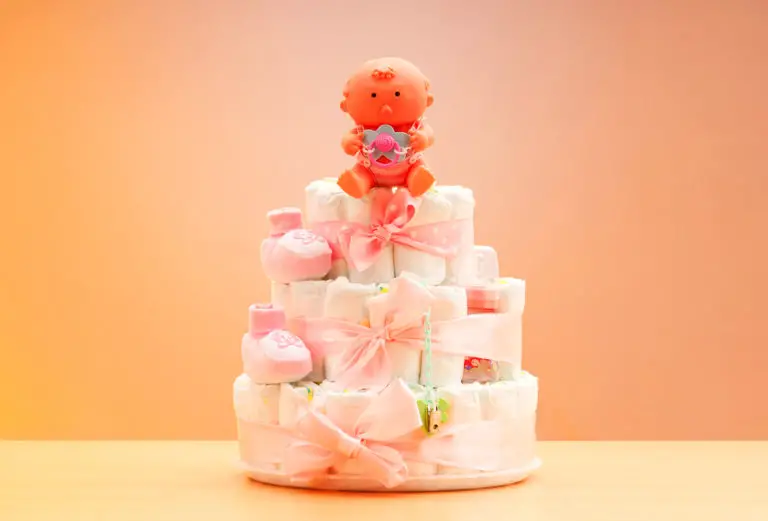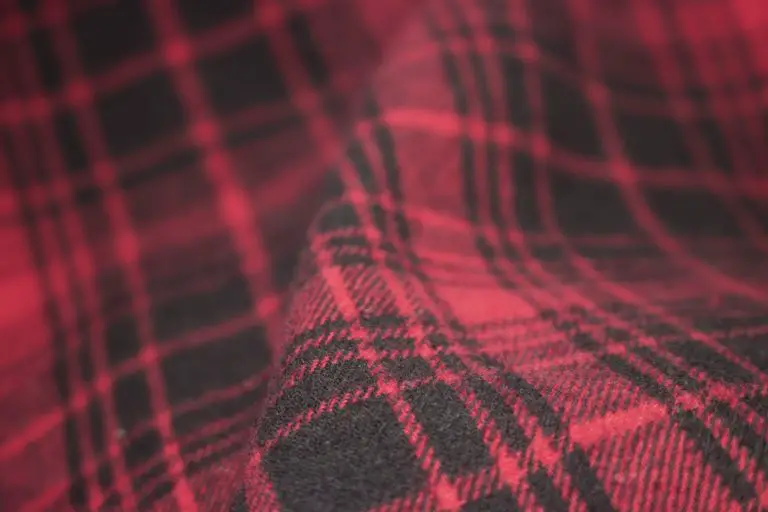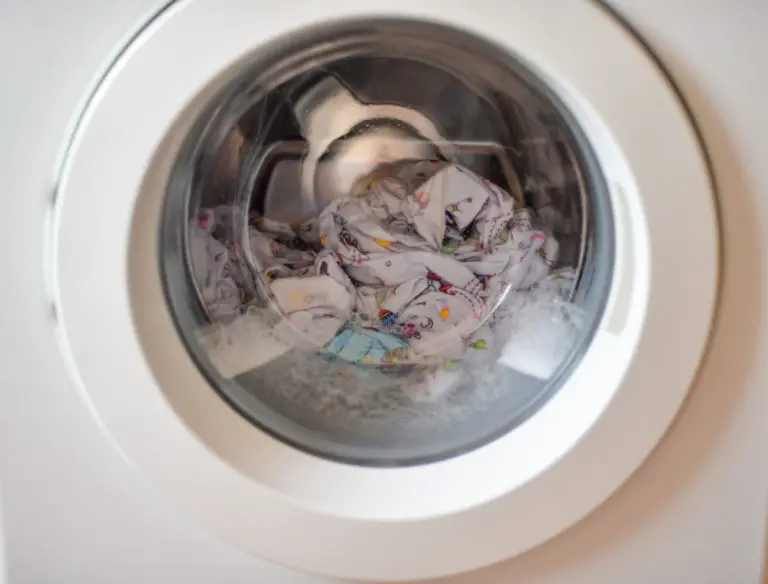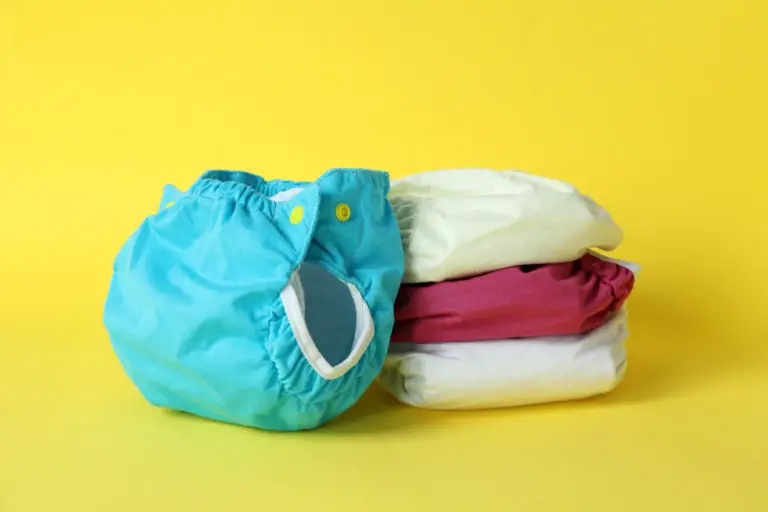PUL Fabric: Properties, Pricing & Sustainability (2024)
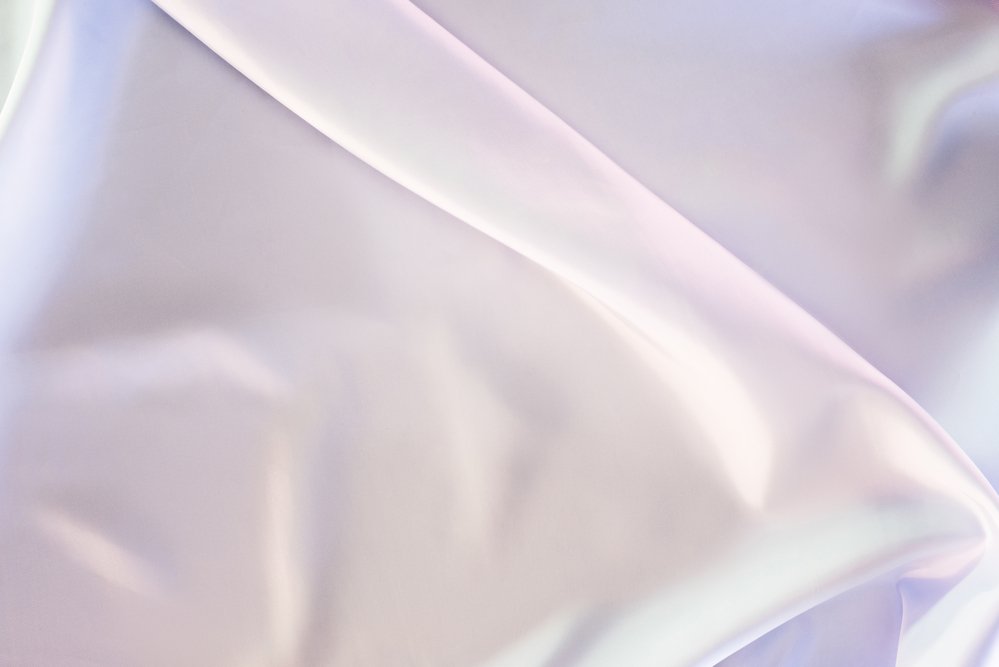
PUL stands for polyurethane laminate. PUL fabric is essentially a waterproof fabric with a plastic coating and was first used by the hospital industry. It has become prevalent among cloth diaper users for its water-proof properties but has many other useful applications around the home. TPU is the name of the laminate used to make PUL and can be applied to several different fabric types.
Fabric Profile
Fabric Name: PUL
Synonyms: Polyurethane laminate, Diaper fabric
Fiber Type: Synthetic fiber
Breathability: Breathable
Absorbency: Water-resistant
Characteristics: Water-resistant, durable, soft, stretchy
Washing Requirements: Wash with hot water
Common Uses: Cloth diapers, table cloths, wet bags, bibs, changing pads
Heat Press Temperature: If needed, iron on the lowest setting
- What is PUL?
- Types of PUL Fabric
- PUL Fabric Characteristics
- Downsides of PUL Fabric
- Common Uses of PUL Fabric
- PUL Fabric Pricing
- How is PUL Made?
- Where is PUL Manufactured?
- PUL Fabric Environmental Impact
- PUL Fabric Certifications
- History of PUL Fabric
- PUL Fabric Alternatives
What is PUL Fabric?
PUL material is essentially any fabric or textile that has been treated with polyurethane laminate. While, in theory, you could apply PUL to any fabric, it is most commonly used with cotton, polyester, or cotton-poly blends.
Polyurethane laminate fabric has a plastic coating applied to the fabric to make it waterproof. Think of the lamination machine your grade school teacher likely used! In addition to fabric, polyurethane laminate is also used in kitchen and bathroom sealers, finishers, and glues.
PUL fabrics were first used in hospitals that needed a durable, water-proof, and easy-to-clean material. Polyurethanes were invented in Germany in the 1930s; however, their application to fabric came a few decades later.
Today you will often find PUL textiles used for mattress covers, bibs, cloth diapers, sanitary pads, lunch bags, and wet bags. In addition, PUL is a preferred fabric for many home crafters for baby and child items.
PUL vs. TPU vs. Fleece
People often confuse PUL and TPU, thinking they are two different types of fabric. However, thermoplastic polyurethane or TPU is the plastic coating used to create PUL textiles. TPU is a blend of plastic and rubber that bonds with the fabric as it is applied. TPU is thin, clear, and has a stretchy elasticity, allowing it to bond with materials easily.
On the other hand, Fleece is a synthetic textile that was invented to replicate sheep’s wool. Fleece has many of the same properties as PUL, including water resistance and breathability. Because of these characteristics, fleece and PUL are both popular choices for cloth diapering and washable sanitary pads.
Fleece is thicker and warmer than PUL, and despite being water-resistant, it is not fully water-proof like PUL. On the upside, fleece will not delaminate like PUL will, which is when the TPU coating begins to peel off the fabric.
Types of PUL Fabric
The main difference between different types of PUL is the weight of the lamination. The most common is 1-mil and 2-mil PULs. PUL fabrics are typically available in cotton, polyester, or a cotton-poy blend. Relatively new to the market is the eco-friendly PUL, which is free of additives like latex and does not emit volatile organic compounds (VOC) when manufactured.
1-mil PUL
1-mil PUL is the most common thickness for PUL fabrics. This style of PUL is used widely for cloth diapers, bibs, changing pads, mattress pads, table cloths, lunch bags, and more. 1-mil pul can be found in a variety of colors and patterns as well as widths.
If you will be using your PUL to create lunch or sandwich bags, you will want to verify that it is considered safe for use with food. ProSoft FoodSAFEⓇ by Wazoodle is one of the only PUL fabrics that meet The Consumer Product Safety Improvement Act (CPSIA) qualifications.
2-mil PUL
2-mil PUL cloth is a thicker style of PUL fabric and is more commonly used for industrial purposes. It is more durable and provides an extra boost of waterproof protection. While you can use it to make cloth diapers, particularly overnight ones, you are more likely to find 2-mil PUL used as patio furniture upholstery, mattress pads, changing cover pads, and wet bags.
2-mil PUL also makes a great drop cloth for children’s art projects or a table cloth where little ones might have frequent spills.
Similar to 1-mil PUL, you can find 2-mil PUL in a variety of colors, patterns, and thicknesses.
Cotton PUL
Cotton PUL is available as either 1-mil or 2-mil PUL and can be found made from 100% organic cotton in some instances. For example, the Wazoodle fabric company sells organic cotton PUL with cotton sourced directly from U.S. farmers.
Cotton PUL has a soft, smooth texture on one side and the PUL coating on the opposite. Cotton is popular for PUL fabric for diapers because it is naturally soft and breathable. You will also find cotton PUL used for athletic shorts, washable sanitary pads, make-up bags, diaper bags, wet bags, and more.
Polyester PUL
Polyester is another common type of PUL that you can find at craft and fabric stores. It comes in both 1-mil and 2-mil thickness and various widths.
Unlike cotton, polyester is a synthetic fabric, so some people prefer to stick with 100% cotton because it is more natural. In either case, PUL fabrics cannot be certified organic, even made with organic fibers because of the TPU coating.
Polyester is less breathable than cotton and doesn’t feel as soft next to your skin, but it is usually more affordable. Polyester PUL is commonly used for mattress pads because of its durability and warmth.
Cotton-Poly Blended PUL
Cotton-poly blended PUL is the best of both worlds. It provides the strength and durability of polyester while offering the softness and breathability of cotton.
Cotton-poly blended PUL is a popular choice for cloth diapers because polyester aids in the moisture-wicking process. Additionally, cotton is prone to shrinking and changing shape, whereas polyester is not, so when the two are combined, they can withstand multiple washes better than cotton.
Cotton-poly blends typically consist of a 65/35 or 50/50 split and are made in a variety of PUL fabric colors, patterns, and thicknesses.
Eco-Friendly PUL
Eco-friendly PUL is the newest PUL cloth to hit the market. Traditionally made PUL uses several chemicals in the lamination process that are harmful to the environment and pollute local air, water, and land.
This modern PUL fabric is free from toxins, lead, BPA, and heavy metals. A handful of fabric manufacturers currently make and sell eco-friendly PUL using the “green lamination” process.
Wazoodle, Nature Fabrics, and Eco-PUL Textiles all produce eco-friendly fabric in the United States. All three companies make the fabric in various colors, patterns, and weights, and you can purchase it directly from their websites.
Eco-friendly PUL is an excellent option for parents who want to use PUL to cloth diaper but want an environmentally conscious fabric.
Characteristics of PUL
The main characteristics of PUL fabric include that it is water-proof, stretchy, reasonably breathable, lightweight, moisture-wicking, and can withstand repeated washings.
PUL is considered, by many, the number one waterproof baby fabric and is used widely to make baby items such as cloth diapers, changing pads, mattress pads, and bibs. Parents find PUL an easy fabric to work with because it is breathable, waterproof, and simple to clean.
Its stretchiness and ability to maintain its shape is another reason it is popular among cloth diapering parents. Babies need flexibility as they move and kick, but they also need diapers that keep mess and wetness contained!
Because PUL is moisture-wicking, it pulls wetness away from your baby’s bottom and prevents diaper rash, which is more common with disposable diapers.
Additional PUL fabric properties include that it is hypoallergenic and doesn’t produce lint or pill.
Downsides of PUL Fabric
One of the most significant downsides of PUL fabric is that it can become delaminated. Delamination is when the plastic TPU layer begins to peel or separate from the fabric. Even with the most cautious care, PUL fabric, over time, is likely to delaminate, but air-drying is one trick to help slow down the process.
PUL clothing can withstand washes at hot temperatures, and the hot water may even help reseal small holes or tears in the lamination. However, dying the fabric at hot temperatures can make it brittle and crack. You should also avoid ironing PUL, but iron on low and on the backside of the fabric if you must.
Some crafters say that working with PUL is challenging because the laminate makes it more difficult to sew, and the sticky laminate can also stick to your sewing machine’s foot. To combat this, it’s recommended that you use a walking foot and sew with the sticky side down.
Common Uses of PUL Fabric
While waterproof PUL is widely known for its use in cloth diapering, there are many other applications for which crafters and manufacturers use the fabric.
For example, PUL fabric qualities make it an excellent choice for other baby gear such as wet bags to store dirty cloth diapers, bibs, changing pads, car seat covers, and mattress pads.
You will also see PUL used to make raincoats, rain hats, purses, make-up bags, patio furniture covers, and washable sanitary pads.
In addition, PUL fabric is used to make reusable swim diapers similar to standard cloth diapers. The difference is that a swim diaper does not have the extra-absorbent layer inside; otherwise, it would soak in all the pool water.
Because PUL fabric texture is smooth, waterproof, and easy to wash, it works well as table cloths, art smocks, or drop cloths for children’s art projects.
PUL Fabric in Cloth Diapers
PUL is one of the most widely used fabrics in cloth diapering.
Diaper PUL is the same type of fabric as any other PUL. But, you may see fabric stores advertise certain prints, styles, and colors, specifically as diaper fabric, because of the cute patterns or prints geared towards kids.
The most common type of PUL used in diapers is polyester or a cotton-poly blend, although you will see 100% cotton used too.
There are claims that modern or eco-friendly PUL doesn’t tend to be as tough or durable as the older PUL fabrics. However, most PUL diaper manufacturers attest to their PUL fabric durability and state that their diapers can withstand 200-300 washes on a hot cycle.
PUL fabric is typically used to make diaper covers for all-in-ones (AIO), hybrids (AI2), and pocket diapers, but you can also use it to make covers for prefolds and flats. Regardless of how it is used, it will need an absorbent layer added for cloth diapering.
PUL Fabric Pricing
Because PUL fabric is so prevalent and widely available, PUL fabric pricing tends to be very reasonable. On average, PUL fabric by the yard typically costs between $10 and $15 per yard. Most experienced sewers can make ten diaper covers from one yard of fabric. However, this would not allow for any mistakes, and your diapers would all be the same color or pattern.
High-quality PUL or eco-PUL has a higher price tag and costs about $18 per yard. One way to save money is to buy your PUL wholesale. This is an excellent idea if you will be making a lot of cloth diapers or other products to sell or give as gifts. The PUL fabric price can drop as much as 50% off the retail price when shopping wholesale.
Because most eco-friendly PUL is made in the U.S., it can stay competitively priced with overseas manufacturers due to lower shipping costs.
How is PUL Fabric Made?
There are two different ways manufacturers can make PUL fabric: hot melt or solvent lamination. Hot melt is also known as green or eco-friendly lamination. Typically PUL is made with cotton, polyester, or a cotton-poly blend. Polyester is the most common type of PUL fabric available because it bonds the best.
To create hot melt or eco-friendly PUL, the plastic TPU layer is affixed to the fabric using a heat-activated glue; it is literally melted onto the existing cloth. Eco-friendly TPU does not use harsh chemicals, and the TPU is made from natural sources. As a result, ECO-friendly TPU is safe to use around food and is considered better for your health.
Traditional PUL is made by fusing the fabric and the polyurethane and then forming a thread that is woven into fabrics. However, the solvent lamination process uses petroleum that creates wasteful by-products and is not considered food safe.
Where is PUL Fabric Manufactured?
There are three leading manufacturers of eco-friendly PUL in the United States; Wazoodle, Nature Fabrics, and Eco-PUL Textiles. Wazoodle and Nature Fabrics are both based in Pennsylvania. Eco-Pul Textiles lists all their products are made in the U.S.A. but does not list their contact information on their webpage. Another U.S.-based eco-friendly PUL manufacturer is Forget Me Not Fabrics in Missouri.
Fibro Laminates, located in India, manufactures and exports PUL fabric to the U.S. and worldwide and is one of the leading manufacturers of mattress pads and PUL fabric.
Other countries that produce PUL in large quantities are Pakistan, Cambodia, Italy, Vietnam, and Bangladesh. Overseas companies tend to produce traditional PUL, and their manufacturing process is not as transparent. Many modern and eco-conscious consumers wish to avoid using traditional PUL. As a result, the U.S. eco-friendly market has been booming the last few decades.
PUL Fabric Environmental Impact
Traditional PUL fabric uses petroleum to create the polyurethane laminate. Unfortunately, creating the laminate produces chemical waste that can affect local waterways, land, and air. This pollution impacts not only the wildlife in the area but also the humans who live nearby.
Additionally, most PUL fabric is polyester-based, and polyester is another petroleum-based product. Polyester production creates similar by-products to polyurethane production. Lastly, PUL is not biodegradable and therefore takes up space in landfills with no clear timeline of how long it will be around.
All that considered, however, PUL fabric, when used for cloth diapering, is still more environmentally friendly than disposable diapers, especially when you consider that the average baby will go through 3,600 to 4,300 diapers just in the first year! Using a few dozen PUL diapers over and over again has much less of an impact.
Eco-friendly PUL is, of course, much better for the environment because it doesn’t use harsh or dangerous chemicals in the manufacturing process.
PUL Certifications
Eco-friendly PUL is eligible for a handful of certifications, showcasing that it is safe to be used with food products. The Consumer Product Safety Improvement Act (CPSIA) has a series of qualifications PUL must meet in order to receive their stamp of approval for use with food. Additionally, eco-friendly PUL designed to be used with food can receive a Food Safe certification by adhering to specific FDA guidelines.
Another certification that eco-friendly PUL may obtain is the CertiPUR-US. This certification verifies that fabric does not contain any harsh or dangerous chemicals and that the manufacturing process has low VOC (Volatile Organic Compound) emissions.
Factories that produce PUL are eligible to earn the Worldwide Responsible Accredited Production (WRAP) certification. This certification ensures that no children under the age of 14 are employed, workers earn a liveable wage, workhouses and factories are safe, and no forced labor is occurring.
History of PUL Fabric
PUL fabric history is somewhat murky. However, some PUL facts we know are that polyurethane, the main component in TPU, was invented by Otto Bayer in Germany in the late 1930s. Otto Bayer, along with fellow scientists at IG Farben Leverkusen, discovered the process of creating polyurethane and pattened it in 1937.
In 1983 we know that Bayer’s continued research in the field led to the first all plastic-body automobile being produced in the U.S., the Pontiac Fiero. Today TPU and PUL fabric is used widely in the industrial and automatic sectors.
Hospitals were the first to use PUL fabric because they needed something water-proof and easy to clean. After that, users transferred the application to cloth diapering and baby products for similar reasons.
Consumers can now find PUL fabric being used to manufacture bedding, upholstery, baby items, lunch boxes, sanitary pads, reusable bags, and clothing.
The invention of eco-friendly PUL has created a surge of interest by cloth diapering parents who avoided PUL due to its environmental impact.
PUL Fabric ALternatives
When it comes to cloth diapering, two of the main alternatives to PUL fabric are wool and fleece. Fleece has a similar weight to PUL fabric weight but is naturally absorbent without the TPU layer. Wool is also naturally absorbent but tends to be heavier.
All three fabrics are breathable and gentle on a baby’s bottom. Wool is the most environmentally conscious of the three because it is a natural and biodegradable product. However, for those who wish to avoid animal products, it is not a viable option.
Other alternatives included waxed cotton, vinyl or plastic, and laminated cotton or linen.
Waxed cotton is a tightly woven cotton textile that is coated with paraffin wax. It is a good alternative if used as a canvas, drop cloth, or similar industrial use.
You can use vinyl and plastic for many of the same uses as PUL, for example, cloth diaper covers and raincoats. However, they are not breathable and may not be comfortable against the skin, especially for babies.
Laminated cotton or linen is similar to PUL fabric quality and can be used for many of the same uses, but it is not as durable or flexible. It is, however, much more breathable than PUL fabric.
FAQ
What is polyurethane laminate fabric?
Polyurethane laminate fabric is usually cotton, polyester, or cotton-poly blended fabric that has a thin, plastic laminate coating adhered to make it waterproof.
Is PUL fabric toxic?
The fabric itself is not toxic. However, it should not be used with food unless it has been certified as Food Safe.
Can PUL fabric go in the dryer?
PUL can go in the dryer, but it is recommended that you air dry because hot dryer temperatures can lead to cracking and delamination.
Is PUL eco-friendly?
Traditional PUL is not considered eco-friendly, but the more modern heat press or green PUL fabrics are made through an eco-friendly process and are usually labeled thus.
How do you sew PUL fabric?
When sewing with PUL, sew with the laminate side down when possible. It is also recommended you use a thicker thread and a walking foot.
How do you clean PUL diapers?
PUL diapers can be washed in the washing machine in hot temperatures with approved cloth diaper detergent. They should be line dried.
Is PUL fabric waterproof?
Yes, 100% PUL fabric is waterproof. There are different thicknesses, most commonly 1-mil and 2-mil although 5-mil can be found as well.
Is TPU the same as PUL?
TPU is the laminate that is used to make PUL. TPU by itself is not a fabric. However, TPU has other uses such as adhesives, car parts, and foams.

Laurel Davidson
Laurel brings her passion for parenting and years of problem-solving experiences to ParentingMode. She is the editor of ParentingMode, ensuring that the content is relevant and valuable to the readers. Laurel received her master’s degree in public administration with a certificate in economic development. She is a stay-at-home mom, raising two adorable kiddos, Aurora and Thomas. Laurel enjoys sharing her experience as a parent, traveling, and good food.

